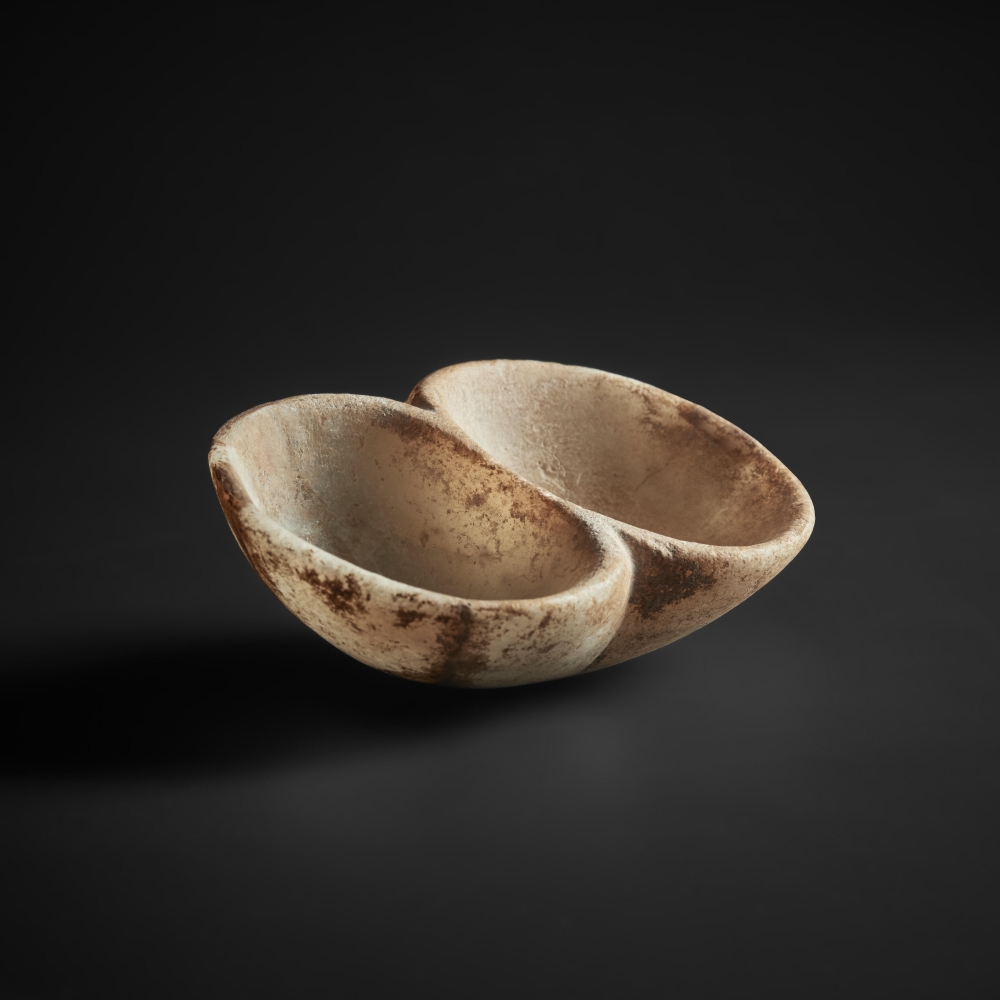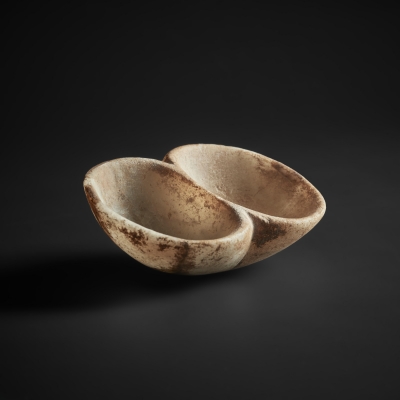Art Market (Switzerland) by 1989;
Private Collection (New York) 1993-2019.
Galerie Heidi Vollmoeller, Marmorkunst der Kykladen im 3. Jahrtausend v. Chr. (Zurich 1989) no. 36;
P. Getz-Gentle, Stone Vessels of the Cyclades in the Early Bronze Age (Pennsylvania State University 1996) p. 171-2, pl. 105;
P. Getz-Gentle, Ancient Art of the Cyclades (Katonah Museum of Art Exh. Cat. 2006) p. 53, cat. no. 70 (not illustrated).
Click here to download the factsheet
This is a rare fragmentary double vase comprised of two semi-circular joined bowls. The bowls are conjoined and share a common thin-walled rim in the middle. In profile, the piece has the appearance of a single bowl with a wedge-shaped vertical crease on each long side. It would have been originally mounted on a bell-shaped pedestal of which only a trace remains today. From what remains, it is clear the top of the stem was narrow; based on comparable examples, the stem would have flared out to a larger foot (see Figure A for a reconstruction).
The function of this piece can be posited based upon remnants of pigment found on similar vessels from the period. In this case as well as in others, pigment is only found on one of each pair of cups. From this, one may guess that in one cup, a small amount of pigment was stored, while the other cup held a liquid medium such as water, oil, or fat that could be mixed with the raw pigment.
The rarity of vessels such as the present example (indeed this specific shape is unparalleled) does not allow for a comprehensive periodization; however, based on stylistic comparison to more frequently appearing vessels, they have been assigned to the first part of the period called Early Cycladic II. On the one hand, the overall shape of these cups when viewed in profile is reminiscent of the standard Early Cycladic II footed cup, while individually the bowls are closer to those of Early Cycladic I, which do not feature any rim definition.
There is some slight restoration (mending breaks) to the left bowl.

